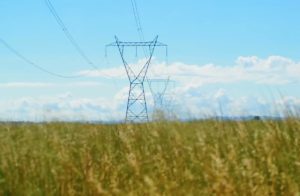The NSW-based transmission group Transgrid has released a 10-year roadmap that outlines a $16.5 billion plan to deal with the exit of coal, 100 per cent renewables, and a complete change in the way the grid is managed and the technologies it uses.
The roadmap notes that Australia’s main grid is expected to reach up to 100 per cent instantaneous renewables by 2025 as the country goes through one of the most dramatic energy transitions in the world and drops its heavy dependence on fossil fuels.
NSW is expected to see four of its remaining give coal generators close within the next decade, and it expects to replace this with some 28GW of new capacity, comprising large scale wind and solar, battery and other storage, and rooftop solar. And some 2,500kms of new transmission lines.
“The scale, speed and challenge of our clean energy transition is enormous,” CEO Brett Redman says in the report.
“Australia is attempting a world first: a large-scale grid dominated by wind and solar power built at break-neck speed.
“This energy system will incorporate a wider range of technologies, more diverse geographical locations, higher variance in demand, and greater reliance on storage and active management of power flows.”
“Many roles are changing. New skills will be required in an industry already facing talent shortages and an ageing workforce and we must also account for global competition for clean energy infrastructure at a time of constrained supply chains.”
Transgrid notes that the bulk of its planned spending – $14 billion – is on new transmission infrastructure to boost links with other states, and to new renewable energy zones within NSW to tap into the best wind and solar resources. This component is well documented, if somewhat delayed.
But the transition also requires new technologies and systems to provide essential grid services – such as system strength and inertia – and to modernise the way the grid is operated in the shift from synchronous generation to inverter based technologies such as wind, solar and battery storage.
Transgrid is looking to send around $2.2 billion on this, and recently held a tender that attracted significant amount of proposed battery storage (10GW) and synchronous condensers (another 10GW) and other technology to fill the gap in system strength.
But one of the more fascinating aspects of the transition is how to manage the change, what equipment to use, and who will deploy it.
According to the document, it will require a step-change in analytical and operational capabilities and capacity to be able to manage and operate an increasingly complex power system.
Transgrid plans to invest $300 million investment to strengthen Transgrid’s technology tools, workforce and training. Around $140 million will be needed to build new operational technology tools and $160 million to increase staffing levels and training for control room operations.
It quotes a report from the CSIRO about the nature of the green energy transition.
“As a result of transformational change, the existing systems in the control room of 2021 will not be adequate to manage the system of the future,” the document notes.
“The way the system is operated, and the way power system operators interact with the system, will have to adapt at a rapid pace.”
It notes that there will be significant risks to the system posed by” inadequate situational awareness, deficient decision-making support and cognitive overload” of staff are difficult to quantify. “Tasks should be automated where possible, but automation is not a panacea for operator situational awareness.”
Transgrid says it not had to endure a major power system outage to date, however recent incidents around the world have highlighted the need for “improved control capabilities and situational awareness” for managing power networks as renewables are added to the grid.
It cites a 2020 State of Reliability study by the North American Electric Reliability Corporation (NERC) that noted that every major outage since the 1960s in the United States was at least partially due to a lack of operability in the form of situational awareness or operations decisions making.
Some in the energy system would argue such situations also contributed to the state-wide system black in South Australia in September, 2016, when the inter-connector from Victoria to South Australia continued to run at near full capacity, despite the threat of violent storms.
Transgrid says it needs new operational technology tools to continue to plan and operate a secure power system that is accelerating towards 100% instantaneous renewables. “We must adapt and evolve our processes, skills and tools to better manage growing system complexity.”
This was also a theme of a speech deliver to Australian Energy Week on Tuesday by AEMO boss Daniel Westerman, who talked of the need to have more “visibility” and control over an ever more complex system.
“Frankly, AEMO’s operational technology is not keeping pace with advances on the power system, or the exponential growth of data and the ability to analyse it in real time to gain insights to make decisions,” Westerman said.
“So we are taking steps to modernise the toolkit that our control room operators have available, through our Operations Technology Program.
“We are working closely with other system operators around the world to leverage our collective knowledge and investments.
“Others brand this work as the ‘control room of the future’, but in Australia that future is often already here.”
Westerman said that this “capability uplift” will help improve forecasting capabilities, visibility into real-time operational flows and disturbances, and use smarter algorithms to better manage ever larger data sets, and to deal with more frequent, significant weather events.








